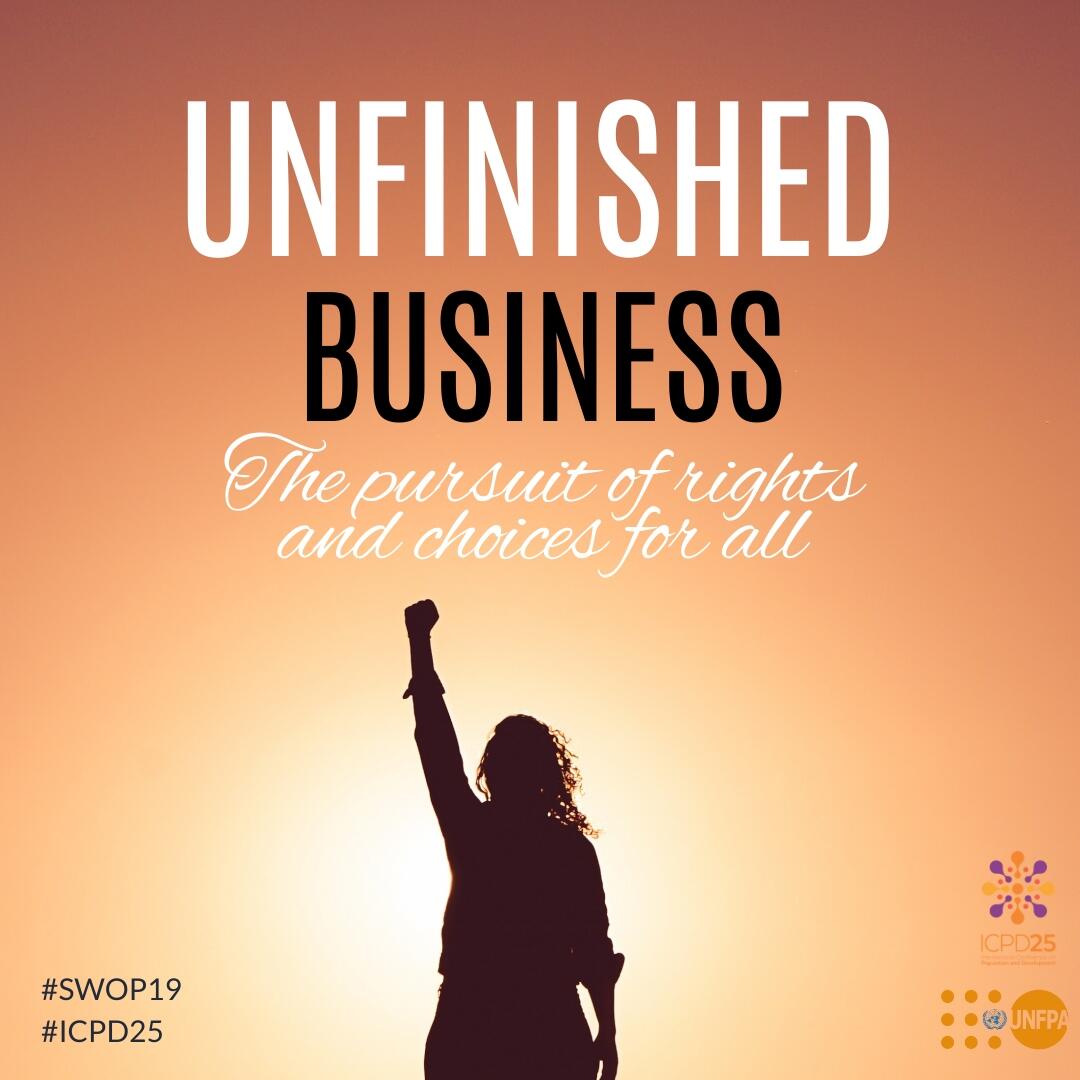New York / Phnom Penh, Cambodia, 10 April 2019— The global reproductive rights movement that began in the 1960s transformed the lives of hundreds of millions of women, empowering them to govern their own bodies and shape their own futures. But despite the gains made over the past 50 years, since the establishment of UNFPA, the United Nations sexual and reproductive health agency, the world still has a long way to go before rights and choices are claimed by all, according to the State of World Population 2019, released by UNFPA today.
On the journey towards rights and choices, women and girls have faced social and economic barriers every step of the way. The efforts of the reproductive rights movements have dramatically reduced the number of unintended pregnancies and maternal deaths, and have cleared the way for healthier, more productive lives for untold millions, says the new UNFPA report, titled Unfinished Business: The Pursuit of Rights and Choices for All.
The report traces advances in reproductive health on the anniversaries of two important milestones. It has been 50 years since UNFPA began operations in 1969 as the first United Nations agency to address population growth and reproductive health needs. It is also the 25th anniversary of the 1994 International Conference on Population and Development (ICPD), where 179 governments called for all people to have access to comprehensive reproductive health care, including voluntary family planning, and safe pregnancy and childbirth services.
Since UNFPA’s establishment in Cambodia in 1994, real progress has been made. The maternal mortality rate has been dramatically reduced from more than 900 deaths per 100,000 live births to less than 170 today. The use of family planning has led to a significant fertility decline from 3.8 in 2000 to 2.7 children per woman in 2014, and the modern contraceptive prevalence rate increased from 19 percent in 2000 to 39 percent in 2014.
However, reproductive rights are still out of reach for some women, in particular those living in rural remote areas. The unmet need for family planning remains high at 12.5 percent and teenage pregnancy rose from 8 percent in 2010 to 12 percent in 2014. One in five women aged 15-49 have experienced physical violence at least once since the age of 15 and 6 percent of women in that age group have experienced sexual violence at least once in their lifetime.
“When a woman does not have a right to choose, her ability to capitalise on her skills and education are eroded, as are so many other key aspects of her life, including the power to decide whether and when to get married and whether and when to become pregnant,” emphasized UNFPA Representative, Ms. Rizvina de Alwis.
The report includes, for the first time, data on women’s ability to make decisions over three key areas: sexual intercourse with their partner, contraception use and health care. It also features 15 champions of change, including HE Mr. Chea Chantum, Secretary-General for General Secretariat for Population of the Ministry of Planning from Cambodia, who have broken barriers in their own context and influenced the landscape of sexual and reproductive health and rights into what it is today.
Facts and figures from the report:
- Number of deaths of women from pregnancy-related causes per 100,000 live births, worldwide: 369 in 1994; 216 in 2015.
- Global modern contraceptive prevalence rate: 24 in 1969; 52 in 1994; 58 in 2019.
- Global fertility rate, or average number of births per woman: 4.8 in 1969; 2.9 in 1994; 2.5 in 2019.
- The highest unmet needs for sexual and reproductive health services are among marginalized groups, including minority ethnic groups; young people; unmarried people; lesbian, gay, bisexual, transgender and intersex people; people with disabilities; and the rural and urban poor.
- An estimated 800 million women alive today were married when they were children.
- Every day, more than 500 women and girls in countries with emergency settings die during pregnancy and childbirth.
Facts and figures from Cambodia:
- Maternal mortality is still high (170 per 100,000 livebirths)
- Current use of any modern contraceptive methods is still low generally, 39% in 2014 (33% for urban and 40% for rural).
- About 12% of currently married women have an unmet need for family planning services, with rural at 12% and urban at 10%.
- Decline in women’s knowledge on HIV/AIDS (15-24 years; Most evident among the youngest females 15-17 years)
- Increase in Adolescent Birth Rate (15-19 years old) per 1,000 women in that groups – from 44/1,000 in 2000 to 57/1,000 in 2015
- Contraceptive prevalence rate among women 15-19 years at 29.1% (currently married)
*******
For more information, please contact:
UNFPA Headquarters:
Omar Gharzeddine: Tel.: +1 212 297 5028; gharzeddine@unfpa.org; or
Richard Kollodge: Tel.: +1 212 297 4992; kollodge@unfpa.org
UNFPA Cambodia Country Office:
Sophanara Pen: Tel.: +855 23 215519 (ext: 115); sophanara@unfpa.org
Access the full report, including global, regional and country data sets, at www.unfpa.org/swop


